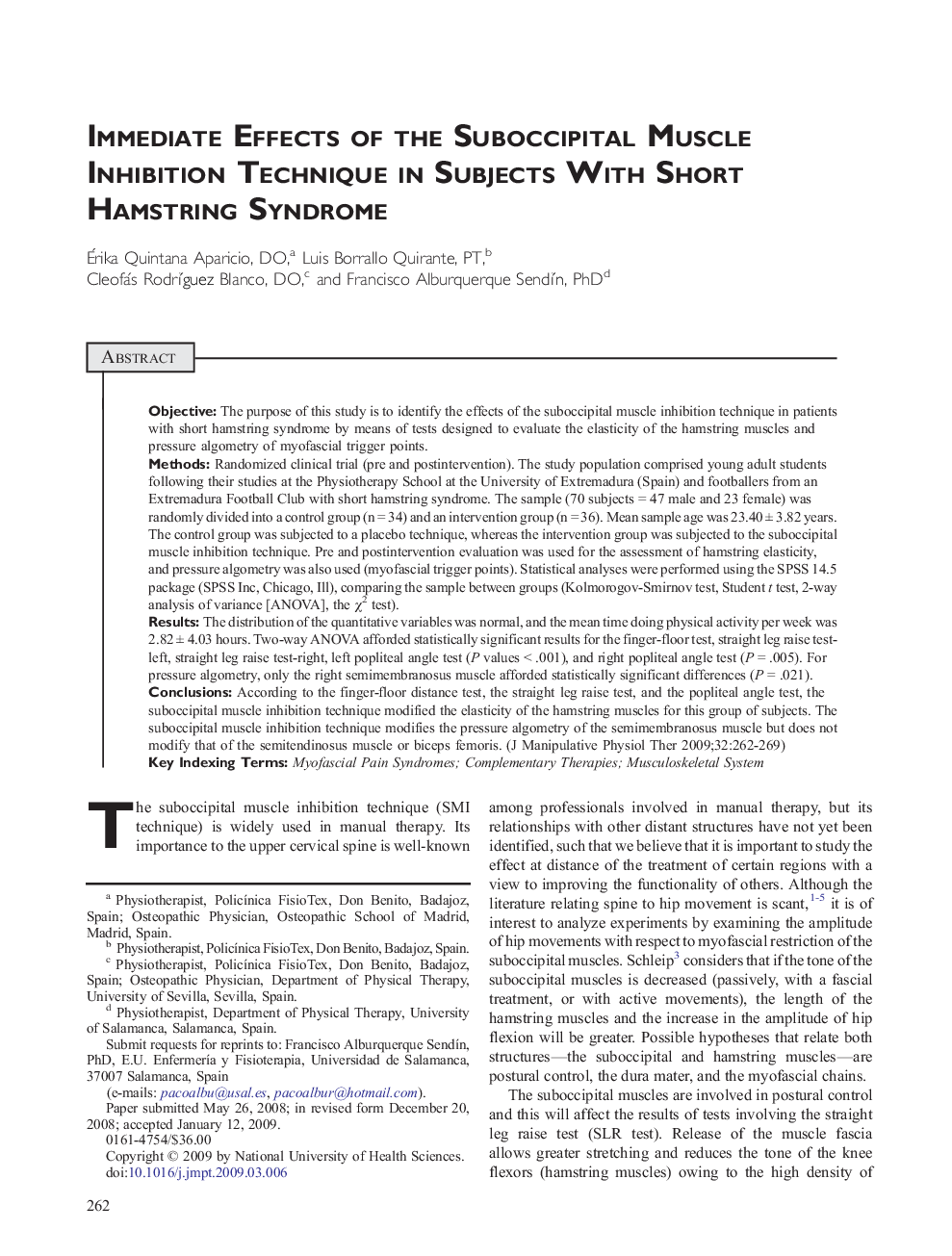| کد مقاله | کد نشریه | سال انتشار | مقاله انگلیسی | نسخه تمام متن |
|---|---|---|---|---|
| 2621570 | 1135700 | 2009 | 8 صفحه PDF | دانلود رایگان |

ObjectiveThe purpose of this study is to identify the effects of the suboccipital muscle inhibition technique in patients with short hamstring syndrome by means of tests designed to evaluate the elasticity of the hamstring muscles and pressure algometry of myofascial trigger points.MethodsRandomized clinical trial (pre and postintervention). The study population comprised young adult students following their studies at the Physiotherapy School at the University of Extremadura (Spain) and footballers from an Extremadura Football Club with short hamstring syndrome. The sample (70 subjects = 47 male and 23 female) was randomly divided into a control group (n = 34) and an intervention group (n = 36). Mean sample age was 23.40 ± 3.82 years. The control group was subjected to a placebo technique, whereas the intervention group was subjected to the suboccipital muscle inhibition technique. Pre and postintervention evaluation was used for the assessment of hamstring elasticity, and pressure algometry was also used (myofascial trigger points). Statistical analyses were performed using the SPSS 14.5 package (SPSS Inc, Chicago, Ill), comparing the sample between groups (Kolmorogov-Smirnov test, Student t test, 2-way analysis of variance [ANOVA], the χ2 test).ResultsThe distribution of the quantitative variables was normal, and the mean time doing physical activity per week was 2.82 ± 4.03 hours. Two-way ANOVA afforded statistically significant results for the finger-floor test, straight leg raise test-left, straight leg raise test-right, left popliteal angle test (P values < .001), and right popliteal angle test (P = .005). For pressure algometry, only the right semimembranosus muscle afforded statistically significant differences (P = .021).ConclusionsAccording to the finger-floor distance test, the straight leg raise test, and the popliteal angle test, the suboccipital muscle inhibition technique modified the elasticity of the hamstring muscles for this group of subjects. The suboccipital muscle inhibition technique modifies the pressure algometry of the semimembranosus muscle but does not modify that of the semitendinosus muscle or biceps femoris.
Journal: Journal of Manipulative and Physiological Therapeutics - Volume 32, Issue 4, May 2009, Pages 262–269